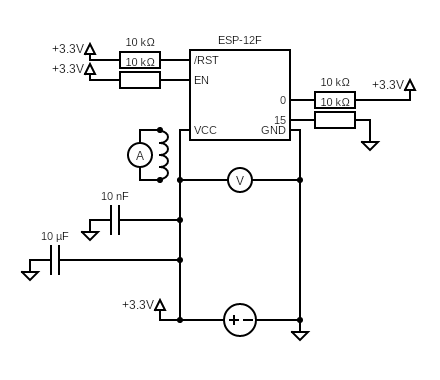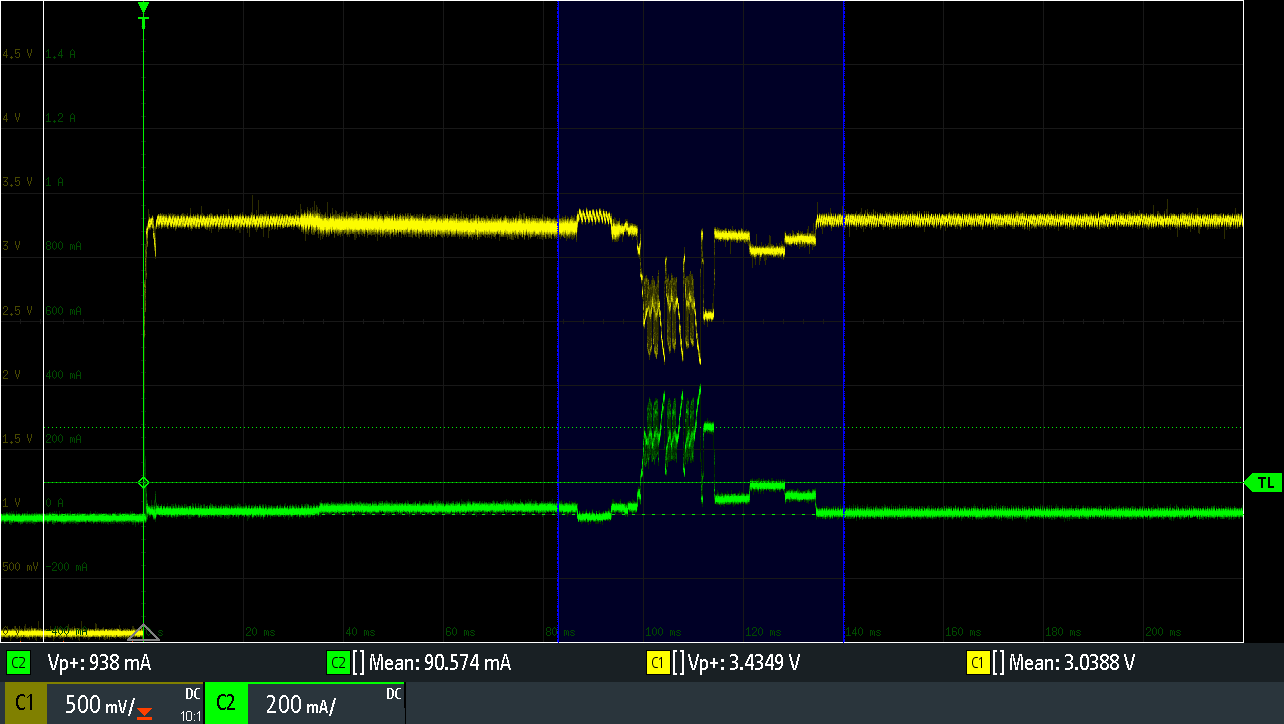ESP8266 Power Considerations
May 19th, 2022During a work on a battery-driven, low power circuit, a proper dimensioning of the power supply circuit became a valid question. No matter what kind of batteries or battery packages are considered, the available voltage range lies at least partially out of the operating range of the ESP and/or peripherals attached to it (don't forget the flash memory). The only reasonable solution seems to be a slightly higher voltage than needed and an LDO (low drop-out voltage regulator). Low drop-out voltage, so that the battery voltage does not need to be too high and, additionally, low quiescent current to save the battery life. These requirements render to a narrow LDO selection, offering very limited current supply. So what is the lowest current guarantee that is needed?
The ESP8266EX datasheet defines the operating current to be at average 80mA. But what kind of peaks may one expect? This is an important question to get answered before deciding on a specific voltage regulator. Simply said - an LDO delivering 150mA can't handle it. The microcontroller will keep crashing (in the best case).
The measurement has been performed using the following circuit:

The voltmeter and ammeter are oscilloscope probes. The ammeter is realized as an inductive power clamp.
What you can see on the diagram is the start-up sequence executing a short program that activates the access point feature of the chip.

The power-on peak jumps up to 938 mA, at least this value could have been measured. The average current has in the selected time window is at ca. 90 mA. As you can see, there are levels of up to 400 mA that must be considered.
Unfortunately, the supply voltage, as measured next to the chip, went below the safe 2.5 V. Due to the setup limitations I could not improve that.